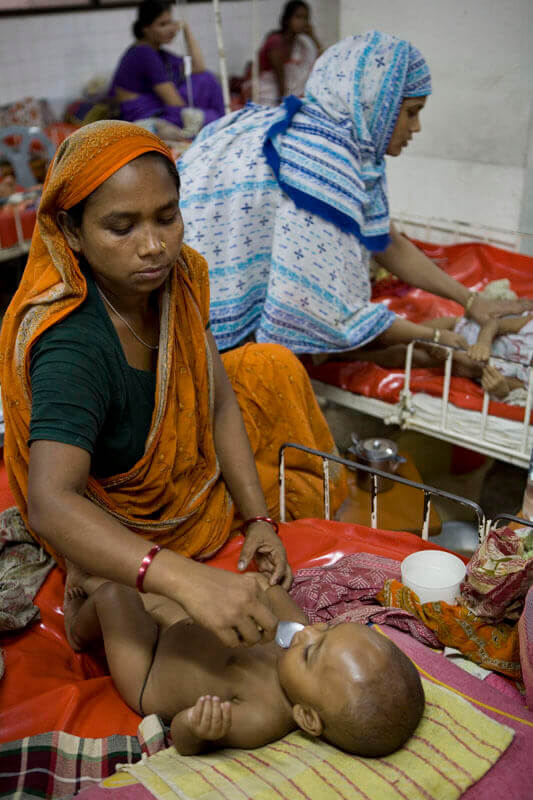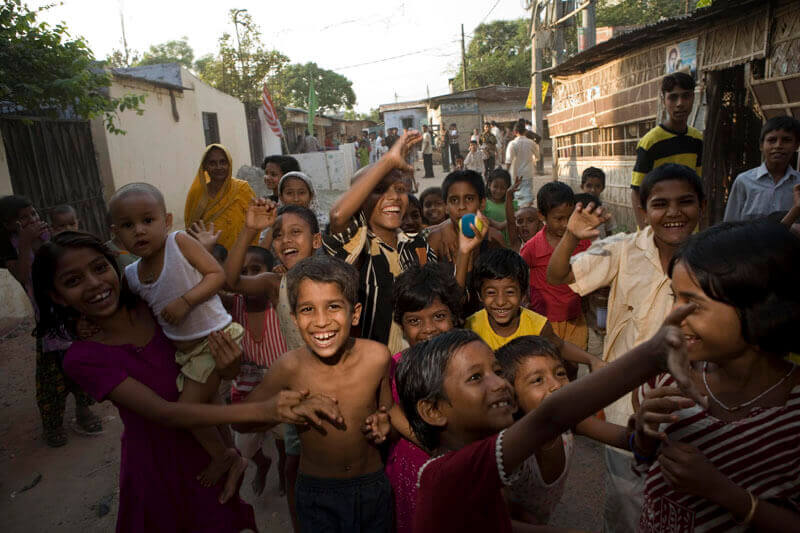Geno de HostosPATH
Geno de Hostos is the Research and Preclinical Development Director for the Drug Development Program at PATH, a global nonprofit dedicated to ending health inequity.
In this post—which originally appeared on the DefeatDD.org blog and PATH’s Drug Development Program blog on June 4—Geno de Hostos—director of research and preclinical development at PATH’s Drug Development Program—reflects on themes in the organization’s new video “Defeat diarrheal disease? Together, we’ve got it covered” . He discusses how an integrated approach to tackling diarrheal disease can save thousands of children’s lives each year.
The uneasy reality
When you walk into a diarrheal disease health clinic in a place like Bangladesh, the reality of the disease strikes you immediately. It’s the rows of bright orange bed covers drying in the sun, long lines of women with children waiting to be seen, and the patients—most of them too young and vulnerable to be already fighting for their lives.

The onslaught of diarrhea is sudden and loss of fluids is copious. Mere inconvenience quickly turns to a daily struggle for life as you fight off dehydration that diarrhea causes. A child is rushed to a hospital where lifesaving oral rehydration solution (ORS) is administered, usually by a mother or a care provider. Spoon by spoon, lost fluids are slowly restored, though weakness can persist for several weeks, and repeated bouts of diarrhea are common.
The reality is that despite rapid progress in reducing child deaths from diarrhea over the last decade—a decrease by more than 50 percent, from almost 1.3 million in 2000 to approximately 600,000 in 2012—there is a lot more to be done. And as long as diarrhea continues to take the lives of more than 1,600 children every day before they can grow to see their fifth birthday, there is no time we can allow ourselves to waste.
Power of an integrated approach
Another reality is that it doesn’t have to be this way. Effective, proven solutions for tackling diarrhea— safe drinking water and improved sanitation, adequate nutrition, rotavirus vaccines, ORS, and supplemental zinc, combined with continued feeding—are already in our hands. We need to work harder to scale them up and find new methods to deliver them to those who need them. Research and development (R&D) efforts focused on new drugs and vaccines hold tremendous potential, and we need to sustain appropriate funding and efforts on that front to continue with our progress forward. Together, these critical solutions form a network of approaches to diarrheal disease that reinforce one another and form a solid foundation for a healthy life.
That’s why at PATH, we work to address diarrhea on multiple fronts. Our drug development team is developing new treatments to shorten the severity and duration of diarrhea before it becomes fatal, while also working to improve the effectiveness of proven diarrhea therapies like ORS. PATH is also working to develop new vaccines against the leading causes of diarrheal disease, partnering with countries to increase access to existing vaccines for rotavirus, developing and delivering safe water treatment and storage products, advancing health devices, and strengthening behaviors like breastfeeding education.

Let’s keep going!
Having worked in nonprofit drug development for nearly seven years, I am more heartened than ever before by the impressive gains being made in R&D of innovative health technologies to fight the leading causes of child death like diarrhea. I am also reminded of the critical value of sustained commitment to our children and the need to accelerate progress. A multipronged approach can help us get there—among other factors, development of innovative health technologies, opening access to needed vaccines, drugs, clean water and sanitation, adequate nutrition, and education will continue to push us forward.
It’s time we change the reality of diarrheal disease.
More information